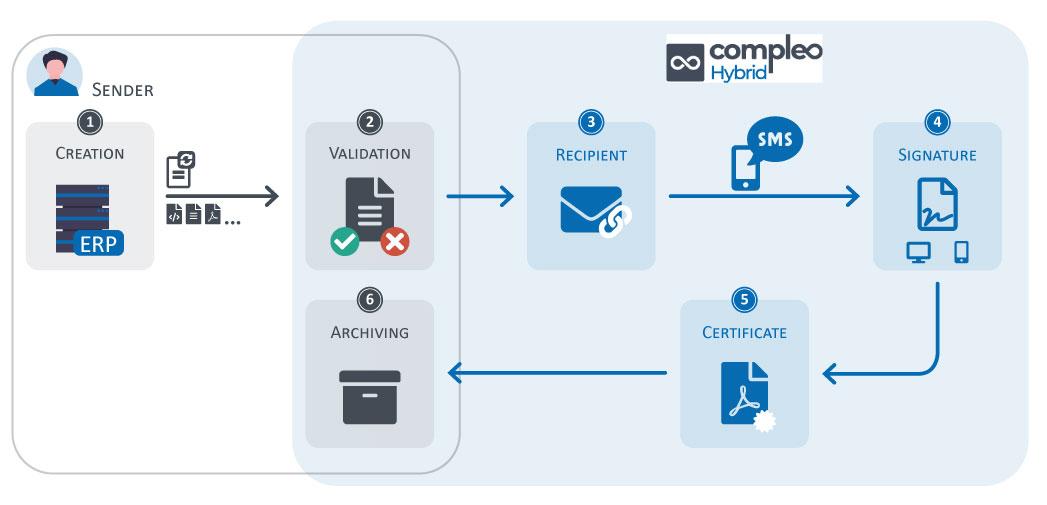In today’s fast-paced digital world, the demand for efficient and secure document signing solutions has never been greater. As businesses and individuals alike strive for seamless workflows, the choice between electronic signature platforms can significantly impact productivity. Among the myriad of options available, two names frequently rise to the top: DocuSign and HelloSign. Both offer unique features and pricing structures designed to cater to a variety of needs, but how do they truly stack up against each other? In this article, we will delve into a comprehensive comparison of DocuSign and HelloSign, exploring their pricing models, standout features, and overall value. Whether you’re a startup in search of budget-friendly solutions or an established enterprise aiming for robust functionality, our analysis will guide you in selecting the best electronic signing tool for your requirements. Join us as we unravel the strengths and weaknesses of these leading platforms to help you make an informed decision in the ever-evolving landscape of digital signatures.
Understanding the Pricing Models of DocuSign and HelloSign
When comparing DocuSign and HelloSign, it’s essential to analyze their pricing models, which cater to different user needs and budgets. DocuSign offers a tiered pricing structure tailored to various business sizes, from small startups to large enterprises. Each tier unlocks additional features, enhancing usability and flexibility. Below is a concise summary of its pricing:
| Plan | Monthly Cost | Key Features |
|---|---|---|
| Personal | $10 | Basic features, 5 documents per month |
| Standard | $25 | Unlimited documents, reminders, and comments |
| Business Pro | $40 | Advanced features, payments, and branding |
On the other hand, HelloSign presents a more straightforward pricing model that makes it an appealing choice for small businesses and freelancers. Its plans are more simplified, ensuring users can easily understand what they’re receiving without the frills. Below is a snapshot of HelloSign’s pricing options:
| Plan | Monthly Cost | Key Features |
|---|---|---|
| Free | $0 | Sign 3 documents per month |
| Essentials | $15 | Unlimited documents, templates, and integrations |
| Premium | $25 | Advanced team management and branding options |
choosing between DocuSign and HelloSign depends heavily on the specific needs of the user. Businesses requiring extensive functionality and a robust suite of tools might opt for DocuSign, while those seeking a user-friendly and budget-conscious solution may find HelloSign appealing.

Feature Set Comparison: Which E-Signature Solution Offers More?
When selecting an e-signature solution, the range of features available can significantly influence decision-making. DocuSign, a leader in the e-signature market, offers a vast array of functionalities designed to cater to businesses of all sizes. Some of its standout features include:
- Advanced authentication options: Ensure the identity of signers with multifactor authentication, phone calls, or SMS.
- Robust integration capabilities: Seamlessly connect with popular applications such as Salesforce, Google Drive, and Microsoft Office.
- In-person signing: Ideal for face-to-face transactions, allowing quick document execution.
In contrast, HelloSign targets small to medium-sized businesses with a more straightforward and cost-effective approach. While it may not match DocuSign’s breadth, its features remain competitive. Key highlights include:
- User-friendly interface: Intuitive design focused on a smooth signing experience.
- Templates for recurring documents: Streamline workflow with reusable templates that save time.
- Custom branding options: Enhance corporate identity with personalized signing pages.
| Feature | DocuSign | HelloSign |
|---|---|---|
| Advanced Authentication | Yes | No |
| Integrations | Extensive | Moderate |
| User Interface | Complex | Simpler |
| Template Management | Basic | Advanced |

User Experience: Navigating the Interfaces of DocuSign and HelloSign
The user experience offered by DocuSign and HelloSign significantly influences how businesses and individuals interact with electronic signature solutions. DocuSign provides a comprehensive platform with a robust interface that accommodates a variety of functionalities. Users appreciate the intuitive dashboard which features drag-and-drop functionality for document uploads. Key strengths include:
- Customization options for workflows and templates
- In-depth integration with popular CRM systems
- Mobile-friendly design for signing documents on-the-go
In contrast, HelloSign emphasizes a streamlined and straightforward user interface that caters well to those who prefer a more minimalist approach. The emphasis is on ease of use, making the signing process feel effortless, which can be particularly beneficial for newcomers to electronic signatures. Users often highlight:
- Clear call-to-action buttons that guide them through the signing process
- Less clutter in the interface, allowing for quicker navigation
- Beginner-friendly tutorials that ensure users understand all features
Both platforms aim to enhance user satisfaction through distinct design philosophies, ensuring that whether a user leans towards functionality or simplicity, their needs are accommodated effectively.

Making the Right Choice: Recommendations Based on Business Needs
When it comes to choosing between DocuSign and HelloSign, it’s essential to align the decision with your unique business requirements. For small to medium-sized businesses that prioritize user experience and simplicity, HelloSign might offer the most straightforward onboarding process. Its intuitive interface provides easy access to essential features, making it ideal for teams that may not require advanced functionalities. On the other hand, for larger enterprises that handle more complex workflows, DocuSign could be the better fit, given its robust system and comprehensive feature set that supports intricate signing processes and compliance needs.
Consider evaluating the following aspects to gauge which service meets your specific needs:
- Feature Set: Identify the features most relevant to your operations—be it advanced templates, bulk sending, or in-person signing.
- Integration Capabilities: Check how well each solution integrates with your existing software and tools.
- Scalability: Assess whether your choice can grow alongside your business without necessitating a switch.
- Customer Support: Consider the level of customer service and support each platform offers—this can be critical for troubleshooting and optimization.
| Feature | DocuSign | HelloSign |
|---|---|---|
| Ease of Use | Moderately Steep | Very User-Friendly |
| Advanced Features | Yes | No |
| Mobile App | Available | Available |
| Pricing Plans | Higher | More Affordable |
In Retrospect
In the ever-evolving world of digital signatures, choosing the right tool can make all the difference in streamlining your workflow. As we’ve explored in this comparison of DocuSign and HelloSign, each platform brings its own unique strengths to the table. Whether you prioritize robust integration capabilities, user-friendly interfaces, or cost-effective pricing, understanding the nuances of each option is key to finding the perfect fit for your needs.
Ultimately, the decision between DocuSign and HelloSign will depend on your specific requirements, preferences, and budget. As you weigh the features and pricing, remember that the ideal eSignature solution should not only facilitate transactions but also enhance the overall efficiency of your operations. Whichever path you choose, embracing digital signatures is a step towards a more streamlined, paperless future. So, chart your course wisely—your signature may just be the key to unlocking a world of convenience and productivity.




